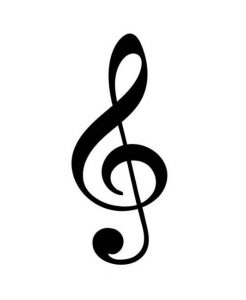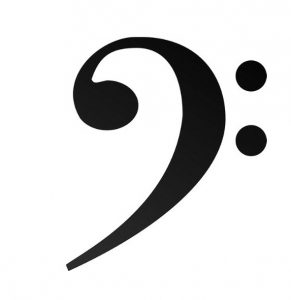Browse in the Library:
Piano Notation explained step by step (1) (with sheet music download)
The sheet music, the written form of musical notes, can seem very complex to the untrained eye. Although reading musical notes is like learning a whole new language, it’s actually a lot less complicated than you might think. This article explains how to read musical notes. See our article ‘Learning to read sheet music: rhythms’ for more information on musical note values, time signatures, counting rhythm and more.
Staff
The foundation of written musical language is the staff. It is made up of five lines and four spaces as shown below. Lines are numbered from 1 to 5 starting from the bottom line. The spaces are numbered from 1 to 4 starting with the bottom space (between lines 1 and 2).

Clefs and names of musical notes
Téléchargement des meilleures partitions dans notre bibliothèque.
Each line and space of the staff corresponds to a musical pitch, which is determined by the clef. Musical notes are named after the first seven letters of the alphabet: do, re, mi, fa, sol, la, si (in English A, B, C, D, E, F, G). The two keys mainly used are the treble clef and the bass clef.
The treble clef, pictured below, is also known as the ‘G-clef’. This is because the curve of the clef encircles the second line of the staff, which is called a ‘G’ on the treble clef staff. The treble clef is used by instruments that have higher registers, such as the flute, violin, and trumpet. The upper registers of the piano are also notated in treble clef. For beginner pianists, the notes on the treble clef staff will be played with the right hand.
The names of the notes on the treble clef spaces spell fa, la, do, and mi.
The names of the notes on the lines of the treble clef are mi, sol, si, re and fa.
The treble clef symbol looks like this:

The bass clef is also known as the ‘F-Clef’, because the fourth line of the staff passes between the two dots. The note on this line of the bass clef staff is, precisely, an ‘fa’.
The bass clef symbol looks like this:

Alterations:

In Western music, an ‘accidental’ can be added in front of the note to change the pitch by a semitone or semitone.
The flat symbol is used to indicate that the pitch of the note should be lowered by a semitone.
The symbol that looks like a pound sign or hashtag is a pointed sign. It indicates that the note it precedes should be raised by a semitone.
If the note is no longer supposed to sound sharp or flat, it will be preceded by a natural sign, the natural.
Remember that accidentals only apply within the given measure. The bars are separated by bars, a thin straight vertical line that crosses the four spaces of the staff, as shown below.

Dynamics
| Pianissimo |
 Pianissimo is an Italian word for very soft. When a musical passage should be played very softly, it will be indicated by pp as shown on the left. Pianissimo is an Italian word for very soft. When a musical passage should be played very softly, it will be indicated by pp as shown on the left. |
| Piano |
 Piano is an Italian word for soft. When p appears in a musical passage, it indicates that the music should be played softly. Piano is an Italian word for soft. When p appears in a musical passage, it indicates that the music should be played softly. |
| Mezzo-Piano |
 Mezzo is an Italian term meaning medium or moderate. In music, mezzo-piano is indicated by mp, which instructs the performer to play moderately soft. Mezzo is an Italian term meaning medium or moderate. In music, mezzo-piano is indicated by mp, which instructs the performer to play moderately soft. |
| Mezzo-Forte |
 Forte is an Italian word for strong. Therefore, mezzo-forte (mf) in a musical passage means that it should be played moderately loud. Forte is an Italian word for strong. Therefore, mezzo-forte (mf) in a musical passage means that it should be played moderately loud. |
| Forte |
 When you see f, the musical passage should be played loud, or loud. When you see f, the musical passage should be played loud, or loud. |
| Fortissimo |
 Fortissimo is an Italian word for very strong. When you see ff in a musical passage, it should be played very loudly. Fortissimo is an Italian word for very strong. When you see ff in a musical passage, it should be played very loudly. |
Crescendo
A gradual increase in volume. Can be extended under many notes to indicate that the volume steadily increases during the passage.
| Crescendo |
Diminuendo
A gradual decrease in volume. Can be extended in the same manner as crescendo.
| Terme ou signe | Abréviation |
|---|---|
| decrescendo | decresc. |
| diminuendo | dim. |
| smorzando | smorz. |
| meno forte | |
| morendo | mor. |
| calando | cal. |
Decrescendo / Diminuendo
Decrescendo, abbreviated to decresc., or diminuendo, abbreviated to dim., are both Italian terms for ‘become gradually softer’. This will be indicated in a musical passage by decresc., dim., or by the symbol to the left. The symbol of the decrescendo will be the whole length of the musical passage which will gradually soften.
| Decrescendo/Diminuendo |

